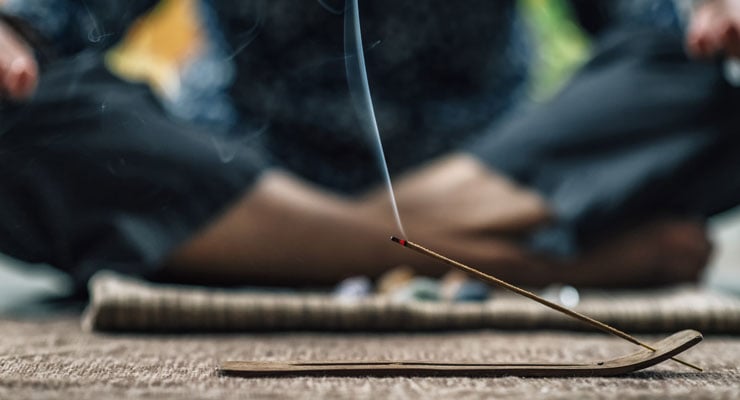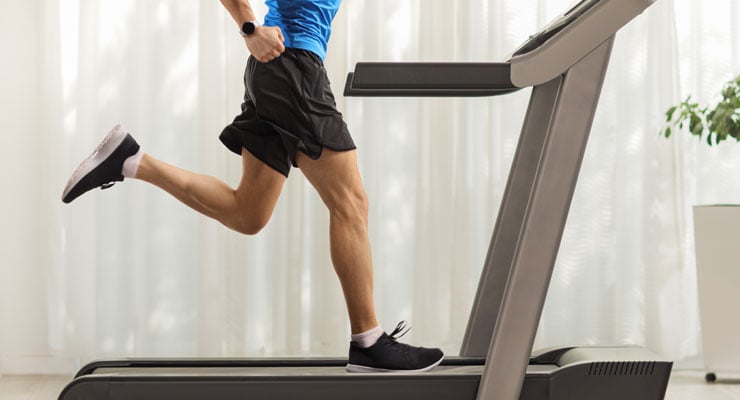 Written by: Joe Emerson // May 19, 2020
Written by: Joe Emerson // May 19, 2020
Last updated: Jan 17, 2023
Exam day success will depend on what you bring to the moment and your ability to be fully in that moment, or mindful, when the proctor says begin. “Mindfulness is the basic human ability to be fully present, aware of where we are and what we’re doing, and not overly reactive or overwhelmed by what’s going on around us,” says Mindful.org. So, here’s the plan, arrive on test day with the knowledge and tools you need to ace the exam. Need more? Here’s something for that toolkit, something that will help now and during the test: 5 meditation techniques to stay mindful on exam day.

Reasons for Using Meditation as a Learning, Testing Tool
How many types of meditation are there? A Google search would have you believe there are six or seven or 16 or 23 or…. Take a deep breath; the only thing that matters is what works for you.
You can explore what Google serves up when you search for types of meditation, from spiritual, movement, focused, visualization, and chanting to mindfulness. Since mindfulness is the goal on exam day, we’ll go with the mindful school of meditation for students, but you can substitute the style you choose and adapt it to the five exercises detailed in the coming sections.
So, why is meditation good for exam prep and on test day? Healthline.com says meditation can:
- Reduce stress
- Control test anxiety
- Promote emotional health
- Enhance self-awareness
- Lengthen attention span
- Potentially reduce age-related memory loss
- Facilitate kindness
- Help fight addictions
- Improve sleep
- Ease pain
- Lower blood pressure
Meditation techniques can be practiced almost anywhere at any time and in spans ranging from the time it takes to deeply inhale and exhale a few times to 20 or more minutes. It’s about finding your sweet spot on the meditation clock.
Here are some pointers from the Mayo Clinic on mindful meditation.
- Doing it daily is recommended. Try to hit that mark for six months for starters.
- Meditating outdoors is especially beneficial.
- Simple exercises can be done whenever and wherever you choose.
- For mindfulness exercises such as body scan or sitting meditation, you’ll need a bit more time and a quiet place to do them, preferably before beginning your daily routine.
Does it work? Yes. “An eight-week mindfulness meditation program appears to make measurable (beneficial) changes in brain regions associated with memory, sense of self, empathy, and stress,” according to a story in The Harvard Gazette titled “Eight Weeks to a Better Brain.”
There are countless approaches to and schools of thought on meditation, and you don’t need a personal trainer or coach. Consider this how-to story from The New York Times. It includes video tutorials on one-, four-, 10-, and 15-minute mindful meditation practices.
Here are five more options, from the most to the least time consuming.
5. Morning Meditation Sessions for Newbies (Your Clock)
This guided approach to getting your ommmmm on is flexible on styles. The point is to clear the clock and find a quiet space where you can meditate. Lifehack.org advises five- to 10-minute sessions initially.
How to do it:
- Wear comfortable clothes.
- Sit comfortably but erect.
- Set a timer.
- Start with five to seven long, slow breaths.
- Concentrate on an object (“the flame of a candle, your breathing or repeating a mantra like ‘I am’”).
- Continue the process and the rhythmic breathing until your internal or external timer goes off.
If your thoughts hijack the session, revisit the next to the last step.

4. Mindful Breathing Meditation (7 Minutes)
Practice this mindful breathing exercise twice daily, Huffpost says, to “develop better focus, attention and a greater overall sense of clarity and calm over time.”
How to do it:
- Sit comfortably with your back straight.
- Establish a pattern of slow, deep breathing.
- Count each breath (inhale, exhale) until reaching 10; then repeat, counting down from 10 to one.
- Repeat this cycle four more times.
- Stop counting after five cycles, then continue the rhythmic breathing for two to three minutes, “visualizing the breath moving through the respiratory system and appreciating its physical relationship with the body.”
3. Body Scan Meditation (5 Minutes)
This exercise is ideal for relaxing before bedtime. Research shows that mindfulness training can alleviate sleep problems (like, say, having trouble sleeping on the night before an important exam).
How to do it:
- Get comfortable, seated or reclining, and ease into relaxed rhythmic breathing.
- Focus on your body, beginning with your left (or right – your call) toes, and work your way up to the left hip, devoting several breathing cycles (inhale, exhale) to each area. Repeat on the right side; then work your way up through the pelvis, abdomen, and torso. Shift to the left and then the right arm, continuing the breathing exercise, from fingertips to shoulders and from the neck to the crown of your head.
- As you advance from toes to crown, Verywellmind.com says, “breathe into the tension. If you notice any uncomfortable sensations, focus your attention on them. Breathe into them, and see what happens. Visualize the tension leaving your body through your breath and evaporating into the air. Move on when you feel ready.”
2. The 5 Senses Drill (3 Minutes)
Let’s say you just pulled into the parking lot at the exam site, and your nerves are leaving you just shy of breathless. This pre-exam meditation exercise is a good way to rein in your emotions:
How to do it, per Mindfulnessexercises.com:
- Identify five things you can see, naming each silently or out loud and pausing with each long enough to process what you see.
- Focus inward and notice four things your body is feeling, taking time with each (a few deep breaths) to process what you feel.
- Name (and process) three different things you can hear.
- Isolate (and process) two things you can smell.
- Use your sense of taste, even if all you come up with is the ghost of breakfast or a smidge of toothpaste or simply saliva.
That shiver of anxiety typically will be gone by the time your inventory has ended.

1. Relaxation Breathing (1 Minute or Less)
It’s test day. You’ve come back to a tough question and you’re still drawing a blank. You can fret and froth or take a minute to get grounded. Basically, catch your breath by regulating it.
Here’s the science behind the benefits of a test anxiety meditation exercise:
- Focusing on breathing occupies the brain (helping you forget about that question for a second).
- Slow, rhythmic breathing helps your fight-or-flight mode stand down.
- The calming effect of meditation stimulates rest-and-digest functions and boosts heart rate variability, delivering a message to your brain: Chill out.
So, by pausing and focusing on establishing a slow, rhythmic breathing pattern, you undergo a short but measurable cognitive reboot.
There are more casual and shorter ways of achieving the same result. Here are three shared by Psychcentral.com:
- Yawn and stretch for 10 seconds every hour.
- STOP. Which stands for stand up and breathe, tune in to your body, observe, and possibility. (“Possibility” equals what’s possible, new, or a step forward.)
- Hug someone tightly, and take three deep breaths together while doing it.
Mindful meditation can set the stage for a stellar performance on a test, but only if you’ve done what it takes to arrive rested, confident, and prepared. You can’t calm yourself with meditation and access knowledge that’s not available.
So, do your due diligence on physical and mental fitness. Arm yourself with tools, test taking tips, and knowledge. Take a deep breath or two; then ace that test.
USF can help if you want professional help prepping for the SAT, ACT, GRE, GMAT, LSAT, or a teacher certification exam. Check out our programs online, or contact us for details.

